Shinde Sweety's Blog
February 17, 2017
Love
Published on February 17, 2017 08:43
•
Tags:
emotions, love, relationship
October 25, 2016
Story of my experiment with Truth

A school memory pops out of my amygdala.
Lil Sweety is in the 10th std. Unit test exam. Subject – English.
She receives a measly 0.5 marks for one particular 5 mark question. She anxiously goes through her whole answer and finds no fault with it. She approaches the teacher, proffers her answer sheet and politely enquires what went wrong with her answer.
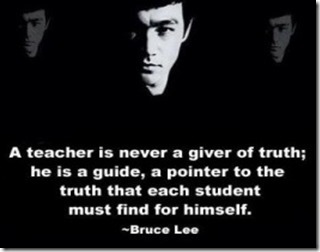
The teacher peruses the answer once and jabs a triumphant thumb at the second sentence. “You wrote M.K Gandhi instead of Gandhiji.”
Sweety blinks in puzzlement and tries to establish her point. “Madam, M.K Gandhi is the same person as Gandhiji.”
“I know.” The teacher snaps. “But you cannot write M.K Gandhi. It’s insulting to the Father of the Nation.”
Sweety is even more perplexed. ”Why should he get insulted by his own name?”
“You wouldn’t understand. Don’t repeat the mistake next time.”
“Is there anything else wrong with my answer?”
“No.”
Finis. Sweety’s marks stay stubbornly steady at 0.5 out of 5.0
Needless to say, that is the end of her experiments with Truth. Since lil Sweety is not convinced by the teacher’s reasoning or reply, she decides that the best solution to this problem is to keep the entire M.K Gandhi chapter as optional. Not just for the Final exam, but Forever.
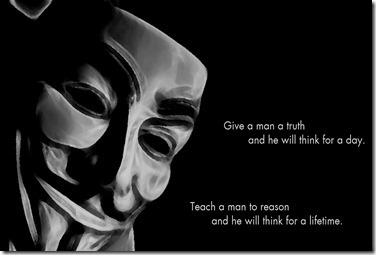
P.S- It’s a true story from her childhood. Sweety is now grown up (relatively) but she remains as baffled as ever. What crime did she commit?
What would you do if you were lil Sweety? What would you do if you were the teacher?
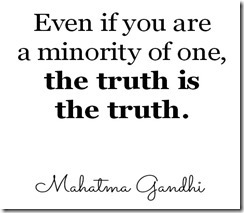
Published on October 25, 2016 21:13
•
Tags:
gandhiji, prejudice, student-teacher-duel, truth-or-dare
June 28, 2016
Vipassana - my experience. Part 1
I sinned on Day 3.
No – I didn’t eat meat, didn’t break the noble silence, didn’t intoxicate myself, didn’t have sex with a man (or woman), didn’t cheat by hiding my IPhone. I even denied myself the temptation of reading a book. Oh that last one was truly a sacrifice!
Yet I broke my sheel or code of conduct … b’cos I wrote. At the cost of foregoing my slot in Heaven … I wrote. How else would you be reading this?
Infact, IMHO writing should be encouraged here, not banned. Vipassana ignites a volcano of conflicting emotions. With speech and sms banned, what better outlet than a diary to jot down thoughts? A day to day see-saw of emotions will always resonate better with future Vipassana aspirants than a Day 11-delirious-am-finally-going-home euphoria.
Day 1: Dhammagiri, Igatpuri. 135 kms from Mumbai. Feeling excited. Am on the threshold of imbibing new knowledge.
Early bird (< 9.30 am) gets a solo room with a view. Being lucky with a capital L, my R38 cabin has a mountain-clouds-blue sky-gulmohar tree view. Situated down a steep flight of stairs, it promises to become the only source of physical exercise in the coming 10 days. (Yes, yoga & jogging is not permitted.)

A grueling 4.00 am to 9.30 pm itinerary includes a whopping 10 hours of meditation. My mind automatically translates 10 hours into 36,000 seconds!!! Not for the faint hearted, admittedly. We get a brutally frank warning to leave right now or stay put for 10 days. No escape in between!
We get allotted fixed seats in the Dhamma hall. (I learn that dhamma = dharma) Lucky me gets a seat bang below the ceiling fan! Cross legged on floor cushions, we ladies focus attention on the Simba area (the triangle from forehead to upper lips).
Just watch the breath come in, go out. Repeat. Repeat. Repeat. Observe. Observe. Observe.
I feel a rivulet of sweat tickle down my back. I pop open one eye; and am just in time to see the sevika switch off all fans. In 35 degrees C Indian summer, in a room sans air conditioner, in a room with 300 women and in a room with closed windows! On the verge of demanding Why? I’m muffled by their code of Noble Silence.
The Vipassana course frowns upon all forms of communication, but trust the women to find a way out. (men are cordoned off in another hall for the Purity code of conduct) Across the room, there are episodic explosions of burps, gas bubbles, hiccups, yawns and umm … other indelicate sounds. No wonder the veteran kitchen caterers plied us with digestive ginger water!
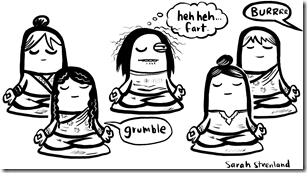
My mind’s Hanuman soon vaults over Simba’s triangular Laxmanrekha and swings from idea to idea, memory to memory & fantasy to fantasy. It shrugs off the ‘No music’ dictum of Igatpuri. Sonu Nigam grabs a mike and croons Deewana in my left ear. An hour later Nazia Hasan sashays in with Aap jai koi. My efforts at meditation are Sonu-otaged on day 1.
I get an Archimedes moment – a brand new story plot pops up in my mind. I dwell on it for 15 minutes and then wave it away reluctantly. Fantasy not allowed.
Day 2: Still cross legged on floor. Today we (try to) focus attention over the nostril entrance for 10 hours. Instead, my attention gets frantic SOS signals from 2 zones – my back muscles and my thigh muscles. They ache, they throb, they spasm and they tremble. A heat wave swells & rolls down my body. The fans stay firmly switched off.
Feeling weary from the sheer monotony of it. Someone please tell me the point of this exercise!
We stand in line for breakfast, lunch and snacks. The dishes are hot, healthy and clean. They include 2 types of rotis, a dal, 2 vegetables, rice, cucumber-carrot salad. Food is unlimited, except for the aamras (mango juice delicacy) that we get today as a feast. Yet, it is bland for my tastebuds. Buttermilk is my saviour of the day. Chilled and delicious, it salvages my lunch.
The story plotline germinates into 3 alternate endings – one happy, one mysterious, one sad. Hmm, which one should I select? Oh, stop it!
I dump my sweaty clothes at the laundry service (only Rs 10/- per cloth.) I sweep my room clean (yes, every room has a broom & duster for its inhabitant to use). I calculate how many days are left before I return home.
Day 3: Same cross-legged posture. Today we narrow down the focus to Hitler moustache area.
Hour after hour. It seems tedious, repetitive & fruitless (i.e fruitless except for the bananas & watermelons, which alternate as our 5.30 pm-last-meal-of-the-day snacks. Hmm, now I know where the expression ‘going bananas’ originated!)
Sitting cross legged for hours makes the sweat pool and ferment behind my kneecaps. Damn, I should have packed a Deo, even though it was prohibited. We are expected to concentrate, focus, introspect and find inner peace in the midst of sweat, heat and aches! It’s sadistic, it’s inhuman, it’s … necessary as per Shri Goenka, insist the sevikas calmly.
At lunch I run a dour eye over the bland food Oh, for a dab of tangy mango pickle! I spoon into a cool watermelon slice. A sly glance at the plates around me reveals that everyone had taken 2 chunky slices of watermelon while I took just one. They were getting smarter while I was getting wiser.
I get a scolding at lunchtime. Owing to noble silence, the scolding takes the form of raised eyebrows and an exaggerated nod towards the uneaten food in my plate. Guilty, m’lord!
My mind rebels & sulks. I feel a mounting , intense irritation. Enough is enough. I bunk 2 whole hours of post lunch meditation – and commit the sin. Thankfully I had the foresight to pack 4 sheets of blank paper. Drunk on the exhilarating company of words I indulge, indulge and indulge myself.
Day 4: A glimmer of understanding in sight at last! Shri Goenka’s voice introduces a variation in the meditation marathon. We learn to sweep attention serially from head to toe and left to right. At each body part, we have to pause and register the skin sensations, which may be gross (heat, cold, ache) or subtle (like vibrations, needles, tingling etc).
I try to imagine Arjun’s fingers tiptoeing across my skin. Just as I get cozy, the Shri Goenka’s voice insists that all sensations should be dispassionate. Reluctantly I brush aside Arjun’s fingers.
Head to toe. Left to right. Repeat. Repeat. Repeat. The game plan is to not enjoy the pleasant sensations and not hate the unpleasant ones. Equanimity is the keyword.
(Hey! Isn’t this the स्तिथप्रद्न्य that Krishn mentioned in Bhagavad Gita? शीतोष्ण सुख दुख is just apt for my attempts to tolerate the current heat agony. So finally everything converges into or emerges from the Gita, I observe bemused.)
My story’s male protagonist gets a scar and a valid reason for it. As for the female protagonist, she’ll have to take a heartbreaking decision … Whatever else Vipassana may or not achieve, it is surely good for creativity!
Day 5: Same game plan as day 4, except that we focus on parallel points i.e both shoulders , both thighs simultaneously. In addition, we are mandated to maintain Adhishttana i.e no posture change, eyes closed and back ramrod straight for an entire 60 minutes. OMG, what if I get deep vein thrombosis or Raynaud’s ischemia?
I walk 6 times up and down the steep flight of stairs to negate the numbing Adhishttana posture.
Day 6: Hallelujah! I attain Adhishttana today.
I feel multiple delicious bubbles bursting beneath my skin. It feels like the exotic pedicure where fishes nibble away dead cells from soles. Or like an O2 facepack. Or like an aroma sauna massage.

Do I survive the next 4 days? Do I gain what I came here for? Do I take away anything precious with me? Do I alter myself for the better? And most importantly, does my story plotline get zany twists?
More in Part 2….
No – I didn’t eat meat, didn’t break the noble silence, didn’t intoxicate myself, didn’t have sex with a man (or woman), didn’t cheat by hiding my IPhone. I even denied myself the temptation of reading a book. Oh that last one was truly a sacrifice!
Yet I broke my sheel or code of conduct … b’cos I wrote. At the cost of foregoing my slot in Heaven … I wrote. How else would you be reading this?
Infact, IMHO writing should be encouraged here, not banned. Vipassana ignites a volcano of conflicting emotions. With speech and sms banned, what better outlet than a diary to jot down thoughts? A day to day see-saw of emotions will always resonate better with future Vipassana aspirants than a Day 11-delirious-am-finally-going-home euphoria.
Day 1: Dhammagiri, Igatpuri. 135 kms from Mumbai. Feeling excited. Am on the threshold of imbibing new knowledge.
Early bird (< 9.30 am) gets a solo room with a view. Being lucky with a capital L, my R38 cabin has a mountain-clouds-blue sky-gulmohar tree view. Situated down a steep flight of stairs, it promises to become the only source of physical exercise in the coming 10 days. (Yes, yoga & jogging is not permitted.)

A grueling 4.00 am to 9.30 pm itinerary includes a whopping 10 hours of meditation. My mind automatically translates 10 hours into 36,000 seconds!!! Not for the faint hearted, admittedly. We get a brutally frank warning to leave right now or stay put for 10 days. No escape in between!
We get allotted fixed seats in the Dhamma hall. (I learn that dhamma = dharma) Lucky me gets a seat bang below the ceiling fan! Cross legged on floor cushions, we ladies focus attention on the Simba area (the triangle from forehead to upper lips).
Just watch the breath come in, go out. Repeat. Repeat. Repeat. Observe. Observe. Observe.
I feel a rivulet of sweat tickle down my back. I pop open one eye; and am just in time to see the sevika switch off all fans. In 35 degrees C Indian summer, in a room sans air conditioner, in a room with 300 women and in a room with closed windows! On the verge of demanding Why? I’m muffled by their code of Noble Silence.
The Vipassana course frowns upon all forms of communication, but trust the women to find a way out. (men are cordoned off in another hall for the Purity code of conduct) Across the room, there are episodic explosions of burps, gas bubbles, hiccups, yawns and umm … other indelicate sounds. No wonder the veteran kitchen caterers plied us with digestive ginger water!

My mind’s Hanuman soon vaults over Simba’s triangular Laxmanrekha and swings from idea to idea, memory to memory & fantasy to fantasy. It shrugs off the ‘No music’ dictum of Igatpuri. Sonu Nigam grabs a mike and croons Deewana in my left ear. An hour later Nazia Hasan sashays in with Aap jai koi. My efforts at meditation are Sonu-otaged on day 1.
I get an Archimedes moment – a brand new story plot pops up in my mind. I dwell on it for 15 minutes and then wave it away reluctantly. Fantasy not allowed.
Day 2: Still cross legged on floor. Today we (try to) focus attention over the nostril entrance for 10 hours. Instead, my attention gets frantic SOS signals from 2 zones – my back muscles and my thigh muscles. They ache, they throb, they spasm and they tremble. A heat wave swells & rolls down my body. The fans stay firmly switched off.
Feeling weary from the sheer monotony of it. Someone please tell me the point of this exercise!
We stand in line for breakfast, lunch and snacks. The dishes are hot, healthy and clean. They include 2 types of rotis, a dal, 2 vegetables, rice, cucumber-carrot salad. Food is unlimited, except for the aamras (mango juice delicacy) that we get today as a feast. Yet, it is bland for my tastebuds. Buttermilk is my saviour of the day. Chilled and delicious, it salvages my lunch.
The story plotline germinates into 3 alternate endings – one happy, one mysterious, one sad. Hmm, which one should I select? Oh, stop it!
I dump my sweaty clothes at the laundry service (only Rs 10/- per cloth.) I sweep my room clean (yes, every room has a broom & duster for its inhabitant to use). I calculate how many days are left before I return home.
Day 3: Same cross-legged posture. Today we narrow down the focus to Hitler moustache area.
Hour after hour. It seems tedious, repetitive & fruitless (i.e fruitless except for the bananas & watermelons, which alternate as our 5.30 pm-last-meal-of-the-day snacks. Hmm, now I know where the expression ‘going bananas’ originated!)
Sitting cross legged for hours makes the sweat pool and ferment behind my kneecaps. Damn, I should have packed a Deo, even though it was prohibited. We are expected to concentrate, focus, introspect and find inner peace in the midst of sweat, heat and aches! It’s sadistic, it’s inhuman, it’s … necessary as per Shri Goenka, insist the sevikas calmly.
At lunch I run a dour eye over the bland food Oh, for a dab of tangy mango pickle! I spoon into a cool watermelon slice. A sly glance at the plates around me reveals that everyone had taken 2 chunky slices of watermelon while I took just one. They were getting smarter while I was getting wiser.
I get a scolding at lunchtime. Owing to noble silence, the scolding takes the form of raised eyebrows and an exaggerated nod towards the uneaten food in my plate. Guilty, m’lord!
My mind rebels & sulks. I feel a mounting , intense irritation. Enough is enough. I bunk 2 whole hours of post lunch meditation – and commit the sin. Thankfully I had the foresight to pack 4 sheets of blank paper. Drunk on the exhilarating company of words I indulge, indulge and indulge myself.
Day 4: A glimmer of understanding in sight at last! Shri Goenka’s voice introduces a variation in the meditation marathon. We learn to sweep attention serially from head to toe and left to right. At each body part, we have to pause and register the skin sensations, which may be gross (heat, cold, ache) or subtle (like vibrations, needles, tingling etc).
I try to imagine Arjun’s fingers tiptoeing across my skin. Just as I get cozy, the Shri Goenka’s voice insists that all sensations should be dispassionate. Reluctantly I brush aside Arjun’s fingers.
Head to toe. Left to right. Repeat. Repeat. Repeat. The game plan is to not enjoy the pleasant sensations and not hate the unpleasant ones. Equanimity is the keyword.
(Hey! Isn’t this the स्तिथप्रद्न्य that Krishn mentioned in Bhagavad Gita? शीतोष्ण सुख दुख is just apt for my attempts to tolerate the current heat agony. So finally everything converges into or emerges from the Gita, I observe bemused.)
My story’s male protagonist gets a scar and a valid reason for it. As for the female protagonist, she’ll have to take a heartbreaking decision … Whatever else Vipassana may or not achieve, it is surely good for creativity!
Day 5: Same game plan as day 4, except that we focus on parallel points i.e both shoulders , both thighs simultaneously. In addition, we are mandated to maintain Adhishttana i.e no posture change, eyes closed and back ramrod straight for an entire 60 minutes. OMG, what if I get deep vein thrombosis or Raynaud’s ischemia?
I walk 6 times up and down the steep flight of stairs to negate the numbing Adhishttana posture.
Day 6: Hallelujah! I attain Adhishttana today.
I feel multiple delicious bubbles bursting beneath my skin. It feels like the exotic pedicure where fishes nibble away dead cells from soles. Or like an O2 facepack. Or like an aroma sauna massage.

Do I survive the next 4 days? Do I gain what I came here for? Do I take away anything precious with me? Do I alter myself for the better? And most importantly, does my story plotline get zany twists?
More in Part 2….
Published on June 28, 2016 10:58
•
Tags:
creativity, fantasy, meditaton, sin, spirituality, temptation, vipassana
March 20, 2016
How to add Goodreads book reviews to Wordpress blog post
At last your book is open to public eyes, minds and opinions …Yay! Slow & steady begins the trickle of those heady reviews which officially stamp you as an Author.
For once, it is perfectly sane to gather all your eggs in one basket. Those precious reviews lie scattered across Amazon, blogger sites and on Goodreads – and you want’em all under one umbrella – namely under your Wordpress domain.
This is how you get a link to the Goodreads review onto your Wordpress blogpost.
1] Add a book review category to your book’s Wordpress page , in case you haven’t already.


2] Under this broad ‘Category’ add a new post titled, for example as ‘Goodreads book reviews of my novel …’
3] Choose ‘Visual’ method (unless you are a pro in HTML coding, which I am emphatically not!)

4] You may want to add a few words about your book plot or characters in introduction. Go ahead, its your space.
When you get to the point where you actually wish to add the book review, highlight the trigger word, for example ‘here’.
Now click on ‘Insert link’ icon.

5] The insert link icon now gives the space to insert the url. Paste the url and click on ‘Add link’ .

Hold on … did you get the url? You didn’t? No problem.
Open your Goodreads page in another window {or alternately, you can perform steps 6 & 7 before starting step 1. Either way is fine as per your convenience … and foresight / hindsight}
6] Open your book’s Goodreads page. Scroll down to book review {or reviews, in case there are more than one :) }
Choose the review you adore. Go to the ‘See review’ tab at end of that particular review.
Right click on it.
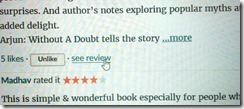
7] Copy the shortcut (in other words, the url). This is the url to be pasted in Wordpress ‘Insert link’ space of step 5. That's it!

8] Not sated by one review? Want to add another link? Scroll and choose another fav review. Then repeat steps 6, 7 and 5.
9] Review is toooo long? Review has gnawing spoilers? Review has ‘oops’ moments that leave you red? Absolutely no problem!
Just select those few lines in the review that just exactly capture your book’s essence. Copy-paste those lines in your post. Then add the trigger ‘see full review here’ text, highlight it and add your ‘Insert link’ to this highlighted text.
Voila! Done! You have a showcase full of review trophies sitting in your domain.
Hit the like button. Share the joy.
For once, it is perfectly sane to gather all your eggs in one basket. Those precious reviews lie scattered across Amazon, blogger sites and on Goodreads – and you want’em all under one umbrella – namely under your Wordpress domain.
This is how you get a link to the Goodreads review onto your Wordpress blogpost.
1] Add a book review category to your book’s Wordpress page , in case you haven’t already.


2] Under this broad ‘Category’ add a new post titled, for example as ‘Goodreads book reviews of my novel …’
3] Choose ‘Visual’ method (unless you are a pro in HTML coding, which I am emphatically not!)

4] You may want to add a few words about your book plot or characters in introduction. Go ahead, its your space.
When you get to the point where you actually wish to add the book review, highlight the trigger word, for example ‘here’.
Now click on ‘Insert link’ icon.

5] The insert link icon now gives the space to insert the url. Paste the url and click on ‘Add link’ .

Hold on … did you get the url? You didn’t? No problem.
Open your Goodreads page in another window {or alternately, you can perform steps 6 & 7 before starting step 1. Either way is fine as per your convenience … and foresight / hindsight}
6] Open your book’s Goodreads page. Scroll down to book review {or reviews, in case there are more than one :) }
Choose the review you adore. Go to the ‘See review’ tab at end of that particular review.
Right click on it.

7] Copy the shortcut (in other words, the url). This is the url to be pasted in Wordpress ‘Insert link’ space of step 5. That's it!

8] Not sated by one review? Want to add another link? Scroll and choose another fav review. Then repeat steps 6, 7 and 5.
9] Review is toooo long? Review has gnawing spoilers? Review has ‘oops’ moments that leave you red? Absolutely no problem!
Just select those few lines in the review that just exactly capture your book’s essence. Copy-paste those lines in your post. Then add the trigger ‘see full review here’ text, highlight it and add your ‘Insert link’ to this highlighted text.
Voila! Done! You have a showcase full of review trophies sitting in your domain.
Hit the like button. Share the joy.
Published on March 20, 2016 11:49
•
Tags:
book-review, goodreads-to-wordpress-blog
October 22, 2015
Your touch brings me alive...
Ever bestowed a title or name upon your possessions? Ever felt that your non-living possessions have mood swings and emotions?
A house, a car, a laptop gleaming in the showcase are mere objects. Once they belong to you, they get kick started into life. I do believe our possessions inherit vibes from us, just as pets do. They attune themselves to our touch, our habits, our fingers. They cling, they adopt, they mould.
Going even farther back, remember Devdatta and Panchajanya, the celestial conch shells of Arjun-Krishn. Gandiva and Sudarshan - the divine bow and divine discus.


In Mahabharata era , weapons and conch shells were extremely personified and personalized objects. They were given elaborate names just as we name a child. They remained private, precious and intensely personal possessions. Never did Krishn lust for Gandiva or Arjun for Sudarshanchakra.
In the midst of this tender attachment to weapons, Krishn also advocated detachment. Responsible detachment, not mere indifference.. Recycling is the universal law. Even human bodies are meant for recycle.
The modern We can murder to grab the 'latest' iPhone. Today's owned object is tossed aside tomorrow.
Use and throw. Objects, relations, people ...
How does one tread the fine tightrope between attachment and detachment?
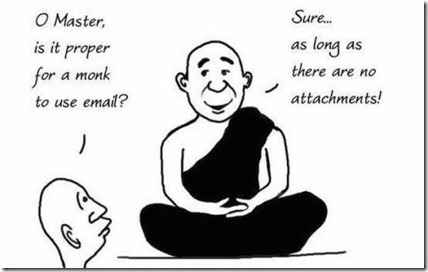
A house, a car, a laptop gleaming in the showcase are mere objects. Once they belong to you, they get kick started into life. I do believe our possessions inherit vibes from us, just as pets do. They attune themselves to our touch, our habits, our fingers. They cling, they adopt, they mould.
Going even farther back, remember Devdatta and Panchajanya, the celestial conch shells of Arjun-Krishn. Gandiva and Sudarshan - the divine bow and divine discus.


In Mahabharata era , weapons and conch shells were extremely personified and personalized objects. They were given elaborate names just as we name a child. They remained private, precious and intensely personal possessions. Never did Krishn lust for Gandiva or Arjun for Sudarshanchakra.
In the midst of this tender attachment to weapons, Krishn also advocated detachment. Responsible detachment, not mere indifference.. Recycling is the universal law. Even human bodies are meant for recycle.
The modern We can murder to grab the 'latest' iPhone. Today's owned object is tossed aside tomorrow.
Use and throw. Objects, relations, people ...
How does one tread the fine tightrope between attachment and detachment?

Published on October 22, 2015 04:29
•
Tags:
attachment, detachment, gandiva, mahabharata, personalized-weapons, sudarshan
September 8, 2015
Madhubala - my pencil sketch
Venus of Indian silver screen. The joyous, ethereal and mesmerizing Madhubala!
[caption id="attachment_397" align="alignnone" width="529"] Madhubala: the wet dream.[/caption]
Madhubala: the wet dream.[/caption]
[gallery type="square" ids="397,405,403"]
[caption id="attachment_397" align="alignnone" width="529"]
 Madhubala: the wet dream.[/caption]
Madhubala: the wet dream.[/caption][gallery type="square" ids="397,405,403"]
Published on September 08, 2015 08:20
•
Tags:
art, bollywood-actress, madhubala, pencil-sketch
August 24, 2015
How to transfer Wordpress blogposts to Goodreads Author blog
Goodreads is every published Author’s sacred space. Reviews, events, videos – and your Goodreads Author blog all condensed under one roof.
However, tedious formatting is a major hurdle in composing a Goodreads blog post. Get an eyeful of the HTML codes required for italics, bold, paragraph, underline and image!

Are all authors techno-savvy? I’m not.
Many authors are bloggers – (just as every blogger is a potential author). However, your Goodreads followers / fans/ friends are not necessarily your Wordpress blog followers. Yet, you want them to enjoy selective Wordpress posts – especially pertaining to your book anecdotes, writing tips, book launch images etc.
1] Select the Wordpress post you wish to share to Goodreads Author blog. (I’m assuming you already have a Goodreads Author profile!)
2] The selected Wordpress post may have a combination of words, images and videos. Click ‘Edit post’ on Wordpress.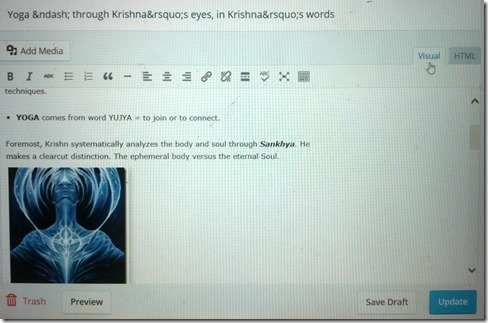
3] Wordpress give you 2 options. Your post can be seen as ‘Visual’ format (as in image above, right upper corner arrow) or ‘HTML’ format (current image, right hand upper corner arrow). Select HTML format.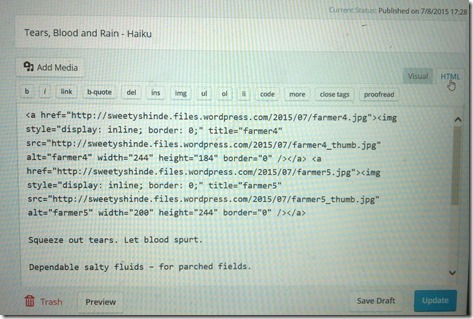
4] Select all and click ‘Copy’.

5] Now go to your Goodreads Author profile on Goodreads website.
6] Scroll down to Author blog. Click on ‘Add new post’.
7] In the space which springs up, ‘Paste’ the copied content from Wordpress blog post. Click ‘Publish’ .
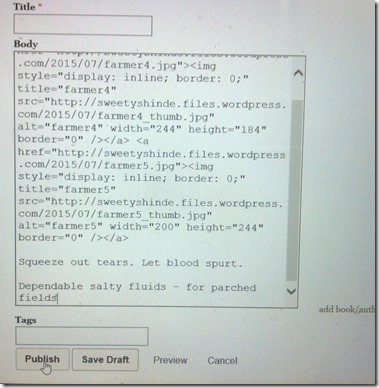
8] Voila! Your entire post including images, bold, italics, underline, paragraph spacing gets published on your Goodreads blog.

Simple, isn’t it?
‘There’s nothing as elusive as the obvious’.
Was this tip helpful? Do you have Goodreads tips to share with fellow authors?
However, tedious formatting is a major hurdle in composing a Goodreads blog post. Get an eyeful of the HTML codes required for italics, bold, paragraph, underline and image!

Are all authors techno-savvy? I’m not.
So, how do you bypass the HTML formatting on Goodreads? How to share posts from Wordpress to Goodreads? Here’s my method …
Many authors are bloggers – (just as every blogger is a potential author). However, your Goodreads followers / fans/ friends are not necessarily your Wordpress blog followers. Yet, you want them to enjoy selective Wordpress posts – especially pertaining to your book anecdotes, writing tips, book launch images etc.
1] Select the Wordpress post you wish to share to Goodreads Author blog. (I’m assuming you already have a Goodreads Author profile!)
2] The selected Wordpress post may have a combination of words, images and videos. Click ‘Edit post’ on Wordpress.

3] Wordpress give you 2 options. Your post can be seen as ‘Visual’ format (as in image above, right upper corner arrow) or ‘HTML’ format (current image, right hand upper corner arrow). Select HTML format.

4] Select all and click ‘Copy’.

5] Now go to your Goodreads Author profile on Goodreads website.
6] Scroll down to Author blog. Click on ‘Add new post’.
7] In the space which springs up, ‘Paste’ the copied content from Wordpress blog post. Click ‘Publish’ .

8] Voila! Your entire post including images, bold, italics, underline, paragraph spacing gets published on your Goodreads blog.

Simple, isn’t it?
‘There’s nothing as elusive as the obvious’.
Was this tip helpful? Do you have Goodreads tips to share with fellow authors?
Published on August 24, 2015 12:57
•
Tags:
author-blogger, author-blogging-tips, goodreads-blogging-tips, html-made-easy
June 22, 2015
Yoga- through Krishna's eyes, in Krishna's words
Did you know that Krishna was one of the earliest advocate of Yoga? On the eve of 21st June, International Yoga Day, lets see his views on Yoga.
Shri bhagavån uvåca – imaµ vivasvate YOGAM proktavån aham avyayam vivasvån manave pråha manur ikßvåkave’bravît
[I instructed this Science of Yoga to Vivaswan, who taught Manu, who taught it to Ikshvaku]- [Bhagavad Gita, CHAP 4, VERSE 1] Krishn’s yoga, is however, NOT limited to asanas or pranayama. It goes beyond physical flexibility or breathing techniques.
YOGA comes from word YUJYA = to join or to connect.
Foremost, Krishn systematically analyzes the body and soul through Sankhya. He makes a clearcut distinction. The ephemeral body versus the eternal Soul. The body is bound to disintegrate and destruct. The Soul within the body is indestructible. It will eventually adopt a new body for its journey in quest of peace. Hence, Krishn defines Yoga as union of this eternal Soul (Atma) to God Krishna (Parmatma).
The body is bound to disintegrate and destruct. The Soul within the body is indestructible. It will eventually adopt a new body for its journey in quest of peace. Hence, Krishn defines Yoga as union of this eternal Soul (Atma) to God Krishna (Parmatma).
He advocates 4 TYPES of Yoga to achieve this purpose -
1] Karma-Yoga: via actions. 2] Gyana-Yoga : via knowledge 3] Dhyana-Yoga: via meditation 4] Bhakti-Yoga: via devotion. Karmayoga deals with actions and work. Actions performed as duty and as sacrificial offering to Krishn. He does NOT advocate absence of action. He merely advises detachment from the fruits of these actions. Gyanayoga deals with knowledge and study of scriptures. Krishna realizes the hunger of a mind teeming & bursting with questions. He encourages queries and doubts – provided they are made with a humble mind, with a true desire to learn and to unearth wisdom.
Gyanayoga deals with knowledge and study of scriptures. Krishna realizes the hunger of a mind teeming & bursting with questions. He encourages queries and doubts – provided they are made with a humble mind, with a true desire to learn and to unearth wisdom.
 Dhyanayoga deals with mind and meditation. It relates to mind discipline, gaining intense concentration and self-control of 5 senses against various temptations.
Dhyanayoga deals with mind and meditation. It relates to mind discipline, gaining intense concentration and self-control of 5 senses against various temptations.
 Bhaktiyoga: deals with devotion. It means giving topmost priority to Krishna and making him the centre point of your current life. It does not mean abandoning family life or professional responsibility. Krishna does not limit his methods of Yoga by geography, religion, gender or age. His yoga aims at attaining eternal peace. It aims at merging one’s soul into Krishna’s energy.
Bhaktiyoga: deals with devotion. It means giving topmost priority to Krishna and making him the centre point of your current life. It does not mean abandoning family life or professional responsibility. Krishna does not limit his methods of Yoga by geography, religion, gender or age. His yoga aims at attaining eternal peace. It aims at merging one’s soul into Krishna’s energy.
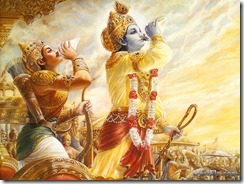 So, are you ready to be Krishna’s Yogi?
So, are you ready to be Krishna’s Yogi?
Shri bhagavån uvåca – imaµ vivasvate YOGAM proktavån aham avyayam vivasvån manave pråha manur ikßvåkave’bravît
[I instructed this Science of Yoga to Vivaswan, who taught Manu, who taught it to Ikshvaku]- [Bhagavad Gita, CHAP 4, VERSE 1] Krishn’s yoga, is however, NOT limited to asanas or pranayama. It goes beyond physical flexibility or breathing techniques.
YOGA comes from word YUJYA = to join or to connect.
Foremost, Krishn systematically analyzes the body and soul through Sankhya. He makes a clearcut distinction. The ephemeral body versus the eternal Soul.
 The body is bound to disintegrate and destruct. The Soul within the body is indestructible. It will eventually adopt a new body for its journey in quest of peace. Hence, Krishn defines Yoga as union of this eternal Soul (Atma) to God Krishna (Parmatma).
The body is bound to disintegrate and destruct. The Soul within the body is indestructible. It will eventually adopt a new body for its journey in quest of peace. Hence, Krishn defines Yoga as union of this eternal Soul (Atma) to God Krishna (Parmatma).He advocates 4 TYPES of Yoga to achieve this purpose -
1] Karma-Yoga: via actions. 2] Gyana-Yoga : via knowledge 3] Dhyana-Yoga: via meditation 4] Bhakti-Yoga: via devotion. Karmayoga deals with actions and work. Actions performed as duty and as sacrificial offering to Krishn. He does NOT advocate absence of action. He merely advises detachment from the fruits of these actions.
 Gyanayoga deals with knowledge and study of scriptures. Krishna realizes the hunger of a mind teeming & bursting with questions. He encourages queries and doubts – provided they are made with a humble mind, with a true desire to learn and to unearth wisdom.
Gyanayoga deals with knowledge and study of scriptures. Krishna realizes the hunger of a mind teeming & bursting with questions. He encourages queries and doubts – provided they are made with a humble mind, with a true desire to learn and to unearth wisdom.
 Dhyanayoga deals with mind and meditation. It relates to mind discipline, gaining intense concentration and self-control of 5 senses against various temptations.
Dhyanayoga deals with mind and meditation. It relates to mind discipline, gaining intense concentration and self-control of 5 senses against various temptations.
 Bhaktiyoga: deals with devotion. It means giving topmost priority to Krishna and making him the centre point of your current life. It does not mean abandoning family life or professional responsibility. Krishna does not limit his methods of Yoga by geography, religion, gender or age. His yoga aims at attaining eternal peace. It aims at merging one’s soul into Krishna’s energy.
Bhaktiyoga: deals with devotion. It means giving topmost priority to Krishna and making him the centre point of your current life. It does not mean abandoning family life or professional responsibility. Krishna does not limit his methods of Yoga by geography, religion, gender or age. His yoga aims at attaining eternal peace. It aims at merging one’s soul into Krishna’s energy.
 So, are you ready to be Krishna’s Yogi?
So, are you ready to be Krishna’s Yogi?
Published on June 22, 2015 12:01
•
Tags:
atma, bhagavad-gita, body-mind-soul, focus, karma-yoga, meditation, parmatma, peace, soul, wisdom, yoga
May 23, 2015
Multiple Arjuna- variations & versions of Mahabharata
Pan-Indian Arjun, Indonesian Arjun, Bengali Arjun, Tamil Arjun.
Zapped? Don’t be!
Indonesia, with its huge Buddhist & Hinduist influences has its own Mahabharat. Variations between ‘our’ MB & ‘their’ MB – some quirky, some weird, some hilarious, some disgusting, some beyond imagination.
P.S – As in Vyas’s MB, many facts are probably expanded/ diluted/ masala-fied by interpolations via folklore, literature and poetic license. So PLEASE take these spin-offs with a pinch of salt.
Read on for ‘twists’ in Indonesian Arjun aka Permadi (Hmm 11th name?)…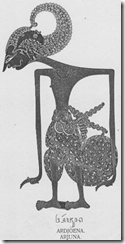
1. Arjun, Bheem & Yudhi are biological sons of PANDU, while the demi-Gods are their spiritual fathers.
2. Other than Draupadi (aka Drupadi), Subadra and Ulupi, his other wives include Supraba and Srikandi. Hooked your interest? Here goes …
a] Supraba is a heavenly nymph or Goddess.
She initially tries to seduce Arjun in order to interrupt his penance, but fails to shatter his concentration. Then follows a fierce duel between Arjun & Kilatnwarna , very similar to the duel with Shiva. Arjun gets Pasupati weapon as his reward.
Thereafter, Arjun learns that Supraba is propositioned by Niwatkavacha, the ogre. The Gods seek Arjun’s help to combat the ogre. On Arjun’s victory, Heaven gifts him Supraba as wife.
b] Srikandi is Draupadi’s sister. She desperately falls in love with Arjun (to the utter disapproval of Draupadi, as expected!). To win his heart, she becomes Arjun’s disciple in archery. As Gurudakshina, she declares that if any woman can defeat her in archery, she would marry Arjun. Srikandi then deliberately loses to opponent Larasati, thus gaining Arjun as husband (Haar ke jeetnewale ko ….Baazigar aka Srikandi kehte hain!)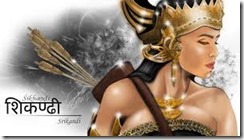
Srikandi is the warrior-wife who accompanies Arjun on military as well as hunting expeditions. She is portrayed as a go-getter, brave and skilled Amazonian … until our super masculine hero awakens the softer side of her.
c] Subadra is Krishn’s (aka Kreshna) twin sister. There is no thrilling, action packed Subhadra –haran. Vasudeva and Pandu (YES, Pandu is still alive!) make it an arranged marriage.
3. KANGSA (aka Kamsa) is killed by Arjun.
4. BALADEWA (aka Balram) seeks assistance from Arjun to win Eravati (aka Revati) as wife. BTW, Eravati is Shalya’s daughter!
5. Shalya ‘s children are all knotted into weird criss-cross ties with Arjun. Apart from Eravati, he has two more daughters. They are married to Dury & Karna, although both daughters are in love with Arjun. Shalya’s son is infatuated with Subhadra and even tries to abduct her(unsuccessfully).
6. Abhimanyu marries Krishn’s daughter Siti Sundari. Also her sister Titisari marries Iravan. Thus, another heartfelt bond is added to Krishn-Arjun relation!
7. Arjun’s twin daughters are married to GHATOTKACH!
P.S – So, Abhimanyu is Krishn’s nephew & son-in-law; while Ghatotkach is Arjun’s nephew & son-in-law! Speak of COMPLEXITY.
8. Arjun’s disciple Satyaki is younger brother of Satyabhama.
Is your HEAD SPINNING? Had enough of twists & turns? Well, one last punch -
9. Abhimanyu-Siti’s marriage is disrupted by a lady warrior named Suprabawati. To counter her on battlefield, all Arjun’s WIVES (led by Srikandi) fight against the invaders … and win, of course!
SOURCES: Indrajit Bandyopadhyaya (Indonesian MB)
Zapped? Don’t be!
Indonesia, with its huge Buddhist & Hinduist influences has its own Mahabharat. Variations between ‘our’ MB & ‘their’ MB – some quirky, some weird, some hilarious, some disgusting, some beyond imagination.
P.S – As in Vyas’s MB, many facts are probably expanded/ diluted/ masala-fied by interpolations via folklore, literature and poetic license. So PLEASE take these spin-offs with a pinch of salt.
Read on for ‘twists’ in Indonesian Arjun aka Permadi (Hmm 11th name?)…

1. Arjun, Bheem & Yudhi are biological sons of PANDU, while the demi-Gods are their spiritual fathers.
2. Other than Draupadi (aka Drupadi), Subadra and Ulupi, his other wives include Supraba and Srikandi. Hooked your interest? Here goes …
a] Supraba is a heavenly nymph or Goddess.
She initially tries to seduce Arjun in order to interrupt his penance, but fails to shatter his concentration. Then follows a fierce duel between Arjun & Kilatnwarna , very similar to the duel with Shiva. Arjun gets Pasupati weapon as his reward.
Thereafter, Arjun learns that Supraba is propositioned by Niwatkavacha, the ogre. The Gods seek Arjun’s help to combat the ogre. On Arjun’s victory, Heaven gifts him Supraba as wife.
b] Srikandi is Draupadi’s sister. She desperately falls in love with Arjun (to the utter disapproval of Draupadi, as expected!). To win his heart, she becomes Arjun’s disciple in archery. As Gurudakshina, she declares that if any woman can defeat her in archery, she would marry Arjun. Srikandi then deliberately loses to opponent Larasati, thus gaining Arjun as husband (Haar ke jeetnewale ko ….Baazigar aka Srikandi kehte hain!)

Srikandi is the warrior-wife who accompanies Arjun on military as well as hunting expeditions. She is portrayed as a go-getter, brave and skilled Amazonian … until our super masculine hero awakens the softer side of her.
c] Subadra is Krishn’s (aka Kreshna) twin sister. There is no thrilling, action packed Subhadra –haran. Vasudeva and Pandu (YES, Pandu is still alive!) make it an arranged marriage.
3. KANGSA (aka Kamsa) is killed by Arjun.
4. BALADEWA (aka Balram) seeks assistance from Arjun to win Eravati (aka Revati) as wife. BTW, Eravati is Shalya’s daughter!
5. Shalya ‘s children are all knotted into weird criss-cross ties with Arjun. Apart from Eravati, he has two more daughters. They are married to Dury & Karna, although both daughters are in love with Arjun. Shalya’s son is infatuated with Subhadra and even tries to abduct her(unsuccessfully).
6. Abhimanyu marries Krishn’s daughter Siti Sundari. Also her sister Titisari marries Iravan. Thus, another heartfelt bond is added to Krishn-Arjun relation!
7. Arjun’s twin daughters are married to GHATOTKACH!
P.S – So, Abhimanyu is Krishn’s nephew & son-in-law; while Ghatotkach is Arjun’s nephew & son-in-law! Speak of COMPLEXITY.
8. Arjun’s disciple Satyaki is younger brother of Satyabhama.
Is your HEAD SPINNING? Had enough of twists & turns? Well, one last punch -
9. Abhimanyu-Siti’s marriage is disrupted by a lady warrior named Suprabawati. To counter her on battlefield, all Arjun’s WIVES (led by Srikandi) fight against the invaders … and win, of course!
SOURCES: Indrajit Bandyopadhyaya (Indonesian MB)
Published on May 23, 2015 00:37
•
Tags:
arjuna, indoensian, javanese, mahabharat, shikhandi, srikandi, supraba
May 9, 2015
Abhimanyu's womb training - proof of Garbh Sanskaar
Abhimanyu heard words, he absorbed them, he remembered them forever.
Abhimanyu heard them in-utero, within Subhadra’s womb.

Was Vyas bluffing in his narration of Mahabharata? How can a formative mass of cells retain memory?
VYAS was NOT bluffing – Vyas was (as many other Indian thinkers) just miles and miles ahead of his times.
Research has now discovered, acknowledged and put into practice the knowledge that VYAS already possessed 5000 years ago in Mahabharata.
Son of Arjun and nephew of Krishn. This illustrious warrior lived a mere 16 years on Earth, but remains an icon of courage.
As per Mahabharata, he listened to Krishn (in some version, Arjun’s) description of Chakravyuh – a military formation as narrated to his mother Subhadra. However, as Subhadra dozed off halfway, he could only hear the secret to enter Chakravyuh, but not way out of it.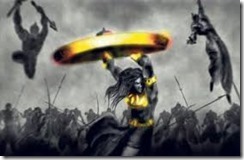
On day 13 of Kurukshetra war, Abhimanyu muscled his way into the dreaded Chakravyuh, but was entrapped within. He fought relentlessly, using every weapon he possessed – even using his chariot wheel to launch an attack. Ultimately, he faced a tragic end, being pulverised to death as he lay unconscious with fatigue.
The womb is a protective shell, the placenta allows a mixture of mother and baby blood. The direct vibrations from diaphragm (it vibrates when mother speaks) amplify sound and relay it to fetus. Thus, words spoken by parents are heard by baby.
Garbh sanskaar or ‘womb training’ relates to this phenomenon, whereby the mother’s emotions, desires, knowledge and behavioral traits get relayed across to baby and affect the baby’s overall development.
1] LANGUAGE: Newborns can actually tell the difference between their mother’s NATIVE tongue and FOREIGN languages.
“The brains do not wait for birth to start absorbing information,” says study author Patricia K. Kuhl, PhD, University of Washington in Seattle. Her findings appear in the journal Acta Paediatrica.
2] Positive effects on fetal BRAIN DEVELOPMENT.
3] Reduces STRESS levels during pregnancy (Yes, even babies can have stress!)
4] Improves baby’s sleeping habits
5] Provides a wonderful BONDING opportunity in utero.
6] Music appreciation increases.
Indian doctors now recommend recitation of Bhagwad Gita, Gayatri Mantra and Classical music to all pregnant mothers.
All Indians should be mighty proud of Vyas’s amazing foresight.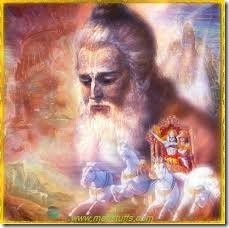
Does your gynecologist/ pediatrician encourage conversations between a pregnant woman and her baby?
Do you believe Mythology is a Reality - a History?
Abhimanyu heard them in-utero, within Subhadra’s womb.

Was Vyas bluffing in his narration of Mahabharata? How can a formative mass of cells retain memory?
VYAS was NOT bluffing – Vyas was (as many other Indian thinkers) just miles and miles ahead of his times.
Research has now discovered, acknowledged and put into practice the knowledge that VYAS already possessed 5000 years ago in Mahabharata.
Abhimanyu:
Son of Arjun and nephew of Krishn. This illustrious warrior lived a mere 16 years on Earth, but remains an icon of courage.
As per Mahabharata, he listened to Krishn (in some version, Arjun’s) description of Chakravyuh – a military formation as narrated to his mother Subhadra. However, as Subhadra dozed off halfway, he could only hear the secret to enter Chakravyuh, but not way out of it.

On day 13 of Kurukshetra war, Abhimanyu muscled his way into the dreaded Chakravyuh, but was entrapped within. He fought relentlessly, using every weapon he possessed – even using his chariot wheel to launch an attack. Ultimately, he faced a tragic end, being pulverised to death as he lay unconscious with fatigue.
Womb as Mother-child nexus
The womb is a protective shell, the placenta allows a mixture of mother and baby blood. The direct vibrations from diaphragm (it vibrates when mother speaks) amplify sound and relay it to fetus. Thus, words spoken by parents are heard by baby.
Garbh sanskaar or ‘womb training’ relates to this phenomenon, whereby the mother’s emotions, desires, knowledge and behavioral traits get relayed across to baby and affect the baby’s overall development.

What are positive benefits to baby?
1] LANGUAGE: Newborns can actually tell the difference between their mother’s NATIVE tongue and FOREIGN languages.
“The brains do not wait for birth to start absorbing information,” says study author Patricia K. Kuhl, PhD, University of Washington in Seattle. Her findings appear in the journal Acta Paediatrica.
2] Positive effects on fetal BRAIN DEVELOPMENT.
3] Reduces STRESS levels during pregnancy (Yes, even babies can have stress!)
4] Improves baby’s sleeping habits
5] Provides a wonderful BONDING opportunity in utero.
6] Music appreciation increases.
Indian doctors now recommend recitation of Bhagwad Gita, Gayatri Mantra and Classical music to all pregnant mothers.
All Indians should be mighty proud of Vyas’s amazing foresight.

Does your gynecologist/ pediatrician encourage conversations between a pregnant woman and her baby?
Do you believe Mythology is a Reality - a History?
Published on May 09, 2015 11:19
•
Tags:
abhimanyu, chakravyuh, garbh, mahabharata, vyas, womb-training




